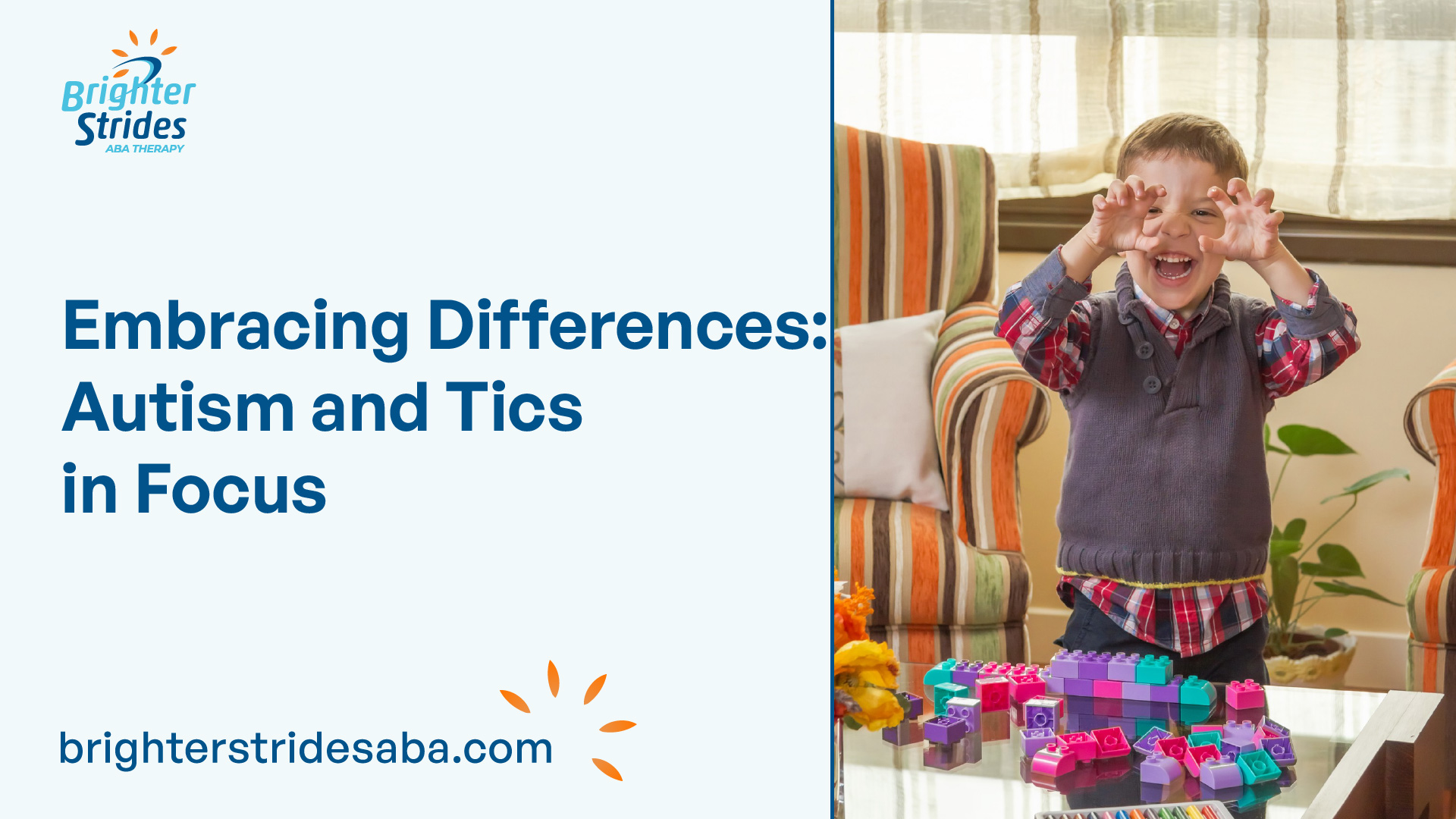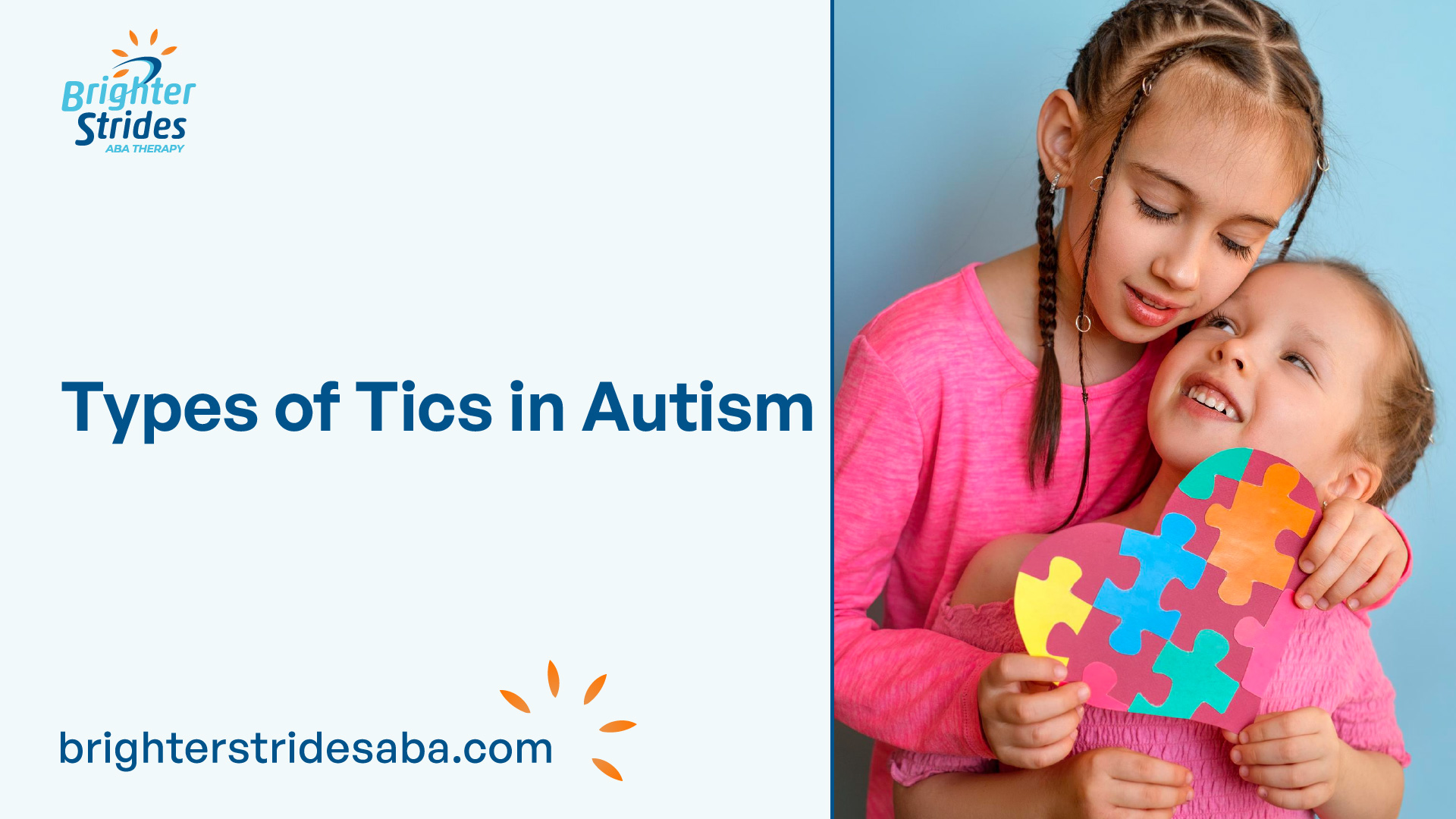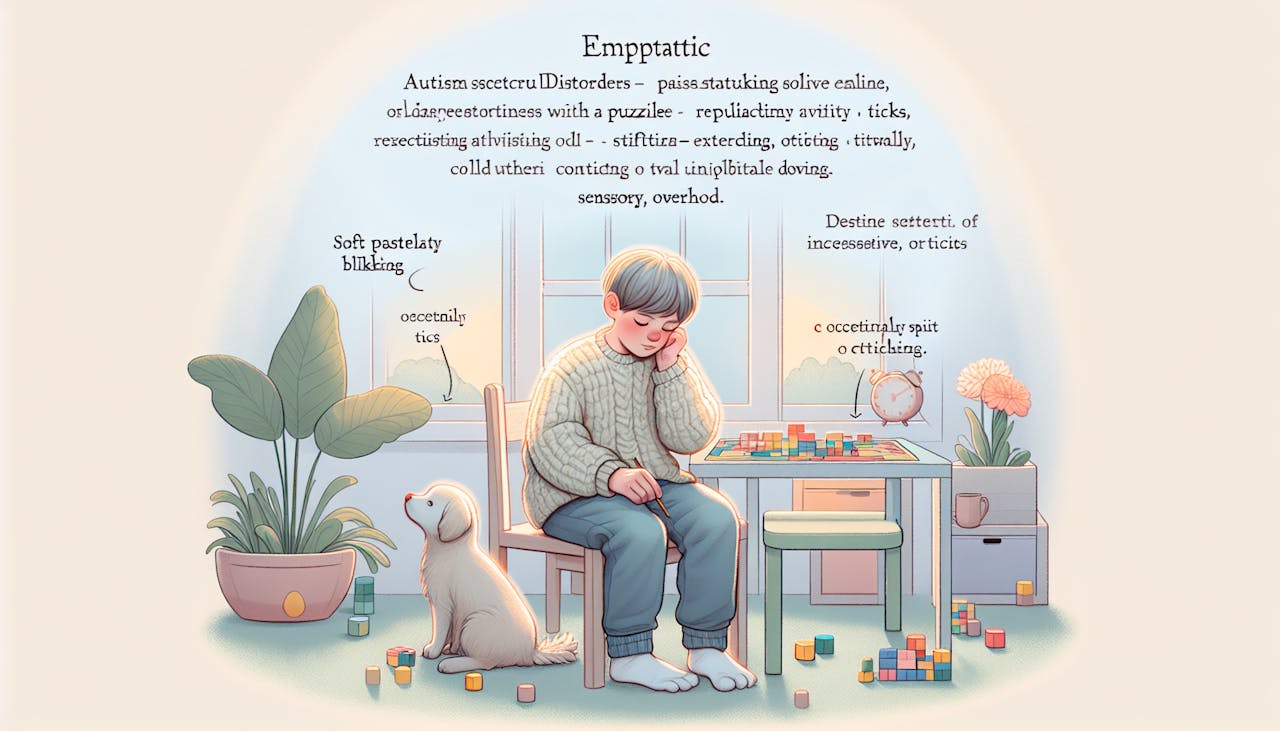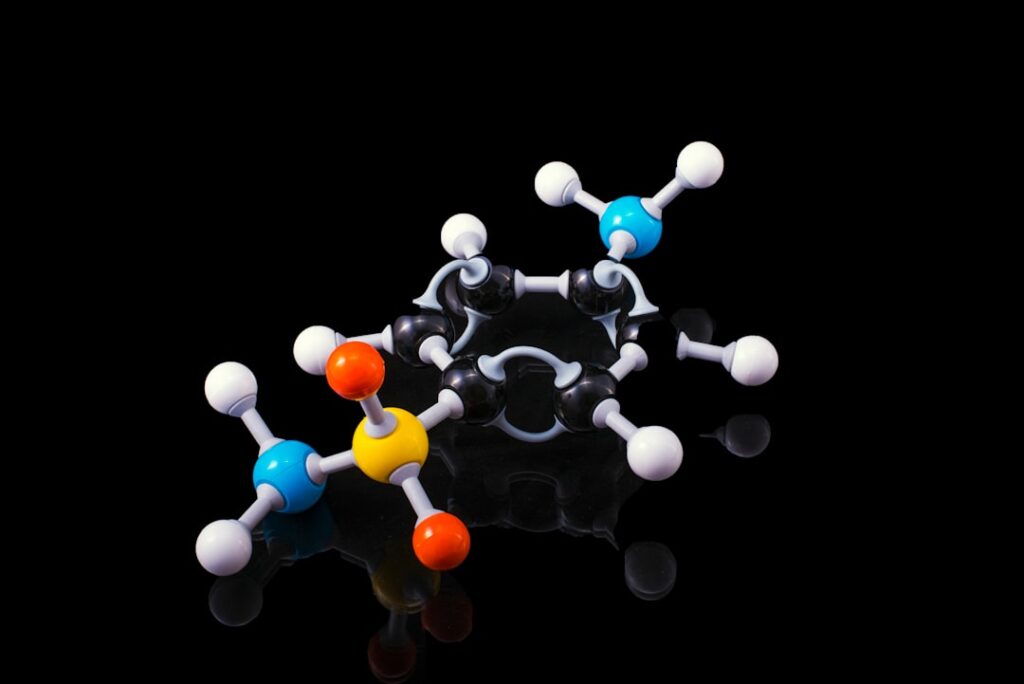
Understanding Autism and Tics
Autism spectrum disorder (ASD) and tics are two distinct conditions that can sometimes coexist. Understanding the connection between autism and tics, as well as the prevalence of tics in individuals with autism, is important in providing comprehensive support and care.
The Connection Between Autism and Tics
Research has shown that there is a link between autism and tics, although the relationship is complex and not fully understood. Tics are sudden, repetitive movements or sounds, while autism is a neurodevelopmental disorder characterized by challenges in social interaction, communication, and restricted or repetitive behaviors. According to the American Psychiatric Association, many individuals with autism spectrum disorder (ASD) may also have tics, although it is important to note that only a small percentage of individuals with ASD exhibit motor or vocal tics.
The exact reasons for the overlap between autism and tics are still being investigated. Imbalances in brain chemicals, including dopamine, in specific regions of the brain, such as the basal ganglia, have been identified in both tic disorders and autism. These imbalances may contribute to the development of tics in individuals with autism.
Prevalence of Tics in Autism
The prevalence of tics in individuals with autism varies. Early studies conducted in the 1970s and 1980s suggested a higher occurrence of tics in individuals with autism. However, more recent research indicates that tics are present only in a small percentage of individuals with ASD. According to Autism Speaks, studies suggest that 20 to 40 percent of children with autism may also have tics.
Within a study, it was found that 22% of individuals diagnosed with autism also displayed symptoms of tic disorders. Specifically, 11% exhibited Tourette syndrome, which involves both motor and vocal tics, and 11% had chronic motor tic disorder [2].
Understanding the connection between autism and tics, as well as the prevalence of tics in individuals with autism, highlights the need for comprehensive assessments and tailored interventions to address the unique needs of individuals who may experience both conditions.

Types of Tics in Autism
Tics, sudden and repetitive movements or sounds, can manifest in individuals with autism. These tics can be categorized into two main types: motor tics and vocal tics.
Motor Tics in Autism
Motor tics involve physical movements and are commonly observed in individuals with autism. These tics can vary in frequency and intensity. Examples of motor tics include eye blinking, shoulder shrugging, neck bending, and repetitive hand movements.
Motor tics in individuals with autism may resemble the tics seen in individuals with Tourette’s syndrome. However, it is important for parents and caregivers to distinguish between tics and stereotypic movements. Stereotypic movements, which are more common in individuals with autism, are repetitive but not sudden like tics. Understanding this distinction can help in accurately identifying and addressing tics in individuals with autism.
Vocal Tics in Autism
Vocal tics involve sounds or words and are another type of tic observed in individuals with autism. These tics can range from simple sounds to complex phrases. Examples of vocal tics include throat clearing, grunting, sniffing, and repeating certain words or phrases.
Like motor tics, vocal tics in individuals with autism may resemble those seen in individuals with Tourette’s syndrome. It is important to note that not all individuals with autism exhibit vocal tics, and the presence and severity of tics can vary from person to person.
Distinction from Stereotypic Movements
While tics and stereotypic movements share some similarities, it is crucial to differentiate between the two. Stereotypic movements are repetitive and non-sudden behaviors commonly seen in individuals with autism. These movements may include hand flapping, body rocking, finger flicking, or spinning objects. Unlike tics, stereotypic movements lack the sudden and involuntary nature of tics.
It is important for parents, caregivers, and healthcare professionals to be aware of the distinction between tics and stereotypic movements in order to accurately diagnose and provide appropriate support and interventions for individuals with autism. Understanding the different types of tics and their relationship to autism is crucial for effectively addressing the challenges faced by individuals with autism who experience tics.
Factors Influencing Autism and Tics
When exploring the relationship between autism and tics, it’s essential to consider the various factors that may influence the presence of tics in individuals with autism. While the exact cause of tics in individuals on the autism spectrum is not fully understood, researchers have identified potential causes and neurological abnormalities that may contribute to the co-occurrence of these conditions.
Potential Causes of Tics in Autism
The exact relationship between autism and tics is still being investigated, and research continues to explore the potential genetic and environmental factors influencing their co-occurrence. While the specific causes of tics in autism are not yet fully understood, it is believed that abnormalities in the brain circuits that control movement and behavior may play a role.
In some cases, tics in individuals with autism may develop due to an imbalance in brain chemicals, particularly dopamine, and abnormalities in specific regions of the brain, such as the basal ganglia. However, more research is needed to fully understand the underlying causes.
Neurological Abnormalities and Imbalances
Neurological abnormalities and imbalances in brain chemistry are thought to contribute to the presence of tics in individuals with autism. Researchers have found that imbalances in dopamine and other brain chemicals in specific regions of the brain, including the basal ganglia, are identified in both tic disorders and autism. These imbalances may disrupt the normal functioning of the brain circuits involved in movement control, leading to the manifestation of tics.
It is important to distinguish tics from non-rhythmic motor stereotypies commonly seen in autism, such as hand flapping and rocking. Tics are characterized by more abrupt movements, such as eye blinking or throat clearing, while motor stereotypies are repetitive, non-purposeful movements. Understanding these distinctions helps in accurately identifying and diagnosing tics in individuals with autism.
While the exact relationship between autism and tics continues to be studied, it is clear that there are neurological factors at play. Further research and exploration are needed to deepen our understanding of the connections between autism and tics, ultimately leading to improved diagnostic and treatment approaches for individuals who experience both conditions.
Impact of Tics on Individuals with Autism
Tics in individuals with autism can have a significant impact on various aspects of their lives, including their challenges and behaviors, as well as their social interactions and academic performance.
Challenges and Behaviors Associated with Tics
Tics in individuals with autism can be disruptive to everyday activities and may interfere with social interactions, communication, and academic performance. It has been observed that children with autism and comorbid tics may exhibit more challenging behaviors compared to those without tics. The presence of tics can further complicate the already complex behavioral profile associated with autism.
Tics can manifest as both motor and vocal behaviors. Motor tics may include movements such as eye blinking, shoulder shrugging, neck bending, and staring, while vocal tics can involve throat clearing or other involuntary sounds. These tics can be repetitive and may occur unexpectedly or in response to certain triggers.
Individuals with autism who experience tics may find it challenging to control these involuntary movements and sounds. This can lead to frustration, embarrassment, and anxiety. It’s important to note that not all individuals with autism are aware of their tics, as observed in some studies. The presence of tics can further contribute to the complexity of managing behaviors associated with autism.
Effects on Social Interactions and Academic Performance
Tics in individuals with autism can also impact their social interactions and academic performance. Social skills development can be particularly challenging for individuals with autism, and the presence of tics may further hinder their ability to engage in social interactions. Tics may draw attention and cause social discomfort for the individual, potentially leading to difficulties in forming and maintaining relationships.
In an academic setting, tics can also pose challenges. The involuntary movements or sounds associated with tics may disrupt concentration, both for the individual with tics and their peers. This can affect the individual’s ability to focus on tasks, participate in classroom activities, and perform academically. Supportive strategies and accommodations may be necessary to optimize academic performance for individuals with autism and tics.
Understanding the impact of tics on individuals with autism is crucial for providing appropriate support and interventions. By recognizing and addressing the challenges and behaviors associated with tics, as well as considering their effects on social interactions and academic performance, individuals with autism and tics can be better supported in their daily lives.
Diagnosis and Treatment of Tics in Autism
When it comes to addressing tics in individuals with autism, accurate diagnosis and appropriate treatment are crucial. In this section, we will explore the process of differentiating tics from other behaviors and discuss approaches to managing tics in autism.
Differentiating Tics from Other Behaviors
To develop an effective treatment plan, it is essential for healthcare providers and therapists to conduct thorough assessments to differentiate between tics and other behaviors in individuals with autism. Accurate diagnosis helps ensure that the appropriate interventions are implemented.
Tics are sudden, repetitive, and involuntary movements or sounds that can be associated with various neurological disorders, including autism spectrum disorder (ASD). However, it is important to distinguish tics from other behaviors commonly observed in individuals with ASD, such as repetitive movements or stereotypic behaviors.
Observation and analysis of the characteristics of the behavior are essential in making this distinction. Tics are typically rapid, brief, and often occur with a sense of urgency. They can vary in intensity and frequency, and may temporarily decrease with focused attention. Consulting with professionals experienced in diagnosing tics in individuals with autism can provide valuable insights to ensure accurate identification.
Approaches to Managing Tics in Autism
Managing tics in individuals with autism involves a multi-faceted approach that addresses the underlying triggers and provides support for the individual. While there is no cure for tics, various interventions can help minimize their impact on daily life.
- Behavioral Therapies: Behavioral therapies, such as Cognitive Behavioral Intervention for Tics (CBIT) and Comprehensive Behavioral Intervention for Tics (CBIT), have shown promising results in managing tics in individuals with autism. These therapies focus on teaching strategies to recognize and manage tics, as well as alternative responses to reduce tic-related distress.
- Medications: In some cases, medications may be prescribed to help manage tics in individuals with autism. These medications, such as antipsychotics or alpha-2 adrenergic agonists, can help reduce the frequency and intensity of tics. However, the decision to use medication should be made in consultation with a healthcare professional, considering the individual’s specific needs and potential side effects.
- Supportive Interventions: In addition to behavioral therapies and medications, supportive interventions can play a crucial role in managing tics in individuals with autism. These interventions may include providing a supportive and understanding environment, implementing sensory strategies to address sensory sensitivities that may exacerbate tics, and promoting self-regulation techniques to help individuals manage stress and anxiety.
It is important to approach the management of tics with a holistic perspective, taking into consideration the individual’s unique needs, preferences, and goals. Collaborative efforts involving healthcare professionals, therapists, educators, and caregivers are essential to develop and implement a comprehensive treatment plan that addresses the specific challenges associated with tics in individuals with autism.
References
- https://carmenbpingree.com/blog/tics-and-autism-whats-the-connection/
- https://www.autismspeaks.org/what-autism
- https://www.goldencaretherapy.com/autism-and-tics/
- https://www.autismparentingmagazine.com/what-are-autistic-tics/
- https://www.abtaba.com/blog/autism-and-tics/
- https://www.ncbi.nlm.nih.gov/pmc/articles/PMC7955999/
- https://www.ncbi.nlm.nih.gov/pmc/articles/PMC6178731/

 We've just released an article!
Check out our blog!
We've just released an article!
Check out our blog!



